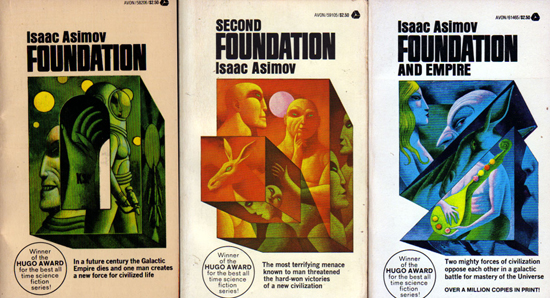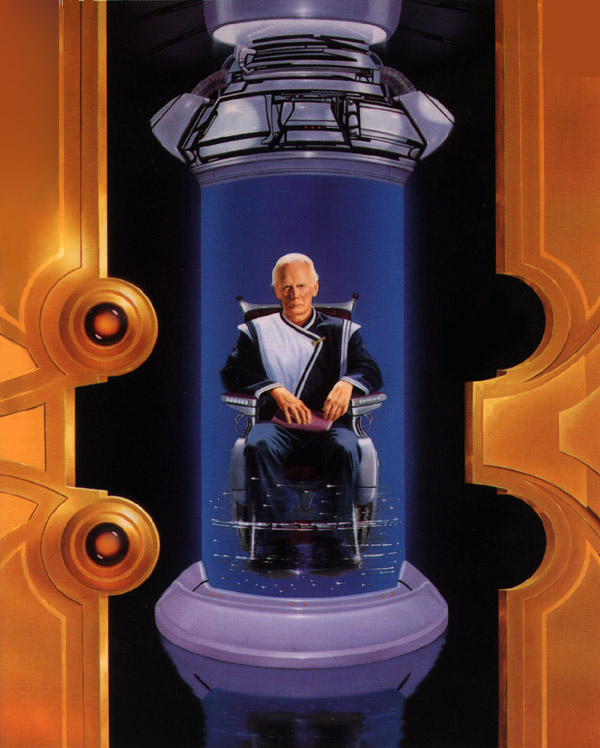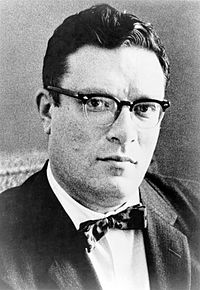Asimov began publishing the stories that comprise this work in 1942, leading to the original three volumes: ‘Foundation’ (1951), ‘Foundation and Empire’ (1952), and ‘Second Foundation’ (1953). Each has about 250 pages. In this rendering they are Readers-Digest condensed and dramatised with a cast of superb players including Maurice Denham, Julian Glover, Dinsdale Landon, Angela Pleasence, and Prunella Scales. It was broadcast on the BBC in 1973.

All in all it is well done. Indeed I was sorry when we got (back) to Star’s End.
It all begins with Professor Dr Hari Seldon on planet Trantor doing macro-mathematical modelling. Using the vast body of data accumulated over the thousands of years of the Empire, he devised a way to predict the future – psychohistory. There in his study, meeting his KPIs, engaging in 360-degree reviews, refereeing papers, submitting to peer review, attending training courses, being tutored for the latest management fad, sitting on selection, tenure, and promotion committees, figuring out how to log into Publons, making endless applications for ever smaller grants, mindful always to keep his door open when female students enter no matter how confidential the discussion may be, complying with Occupational Health and Safety standards in the work place for the data assistants, writing a stream of letters of recommendation for colleagues re-applying for the jobs they have been doing well for years, meeting the fathomless demands of the Ethics Office, he foresees catastrophe.
No one wants to hear bad news, least of all Mahogany Row at Streeling University where Hari ekes out his days as above. For his trouble he dies at his desk, with a funding application incomplete. He failed to meet the last KPI.
Wait! Seldon had long given up on the authorities, educational, political, and religious, and made his own plans. The catastrophe was certain and unavoidable, the Empire would fall into corruption and a period of barbarism — promoted by Pox News and led by President Tiny — would follow. The knowledge of climate change, vaccines, idiocy eradication, and more, that would be lost in a few hundred years would take many thousands to develop anew. It stays dark a long time in a Dark Age, leaving aside, far aside, the scholarly quibbles about the definition of ‘Dark.’
While the collapse was certain, the period of subsequent barbarism might be abridged, and this abridgement became Hari’s purpose, one well concealed since it did not meet his KPIs which were focussed exclusively on next year’s grant round. He created sub rosa a Foundation on the mud heap of Terminus with the purpose of creating a Galactic Encyclopaedia that codified existing knowledge so that when the Empire collapsed there would be the technical and intellectual resources to begin re-building civilisation at a faster rate than otherwise would have been the case. Or maybe not.
He worked out the Seldon Plan (see the entry in Wikipedia) according to which the knowledge within the Encyclopaedia would be put to work. In projecting the future, Hari realised that there would be crises which would be turning points in the tree diagram when the felt tip whiteboard marker he was using run dry. These were Seldon Crises while he looked for another felt tip. He left time capsules with instruction to deal with five of these.
Sure enough, the Empire collapsed, imperial over-reach and too much McKinsey mis-management. Chaos, anarchy, confusion, all the hallmarks of a Republican administration appeared. In dark times one ray of hope was the rumour of the Foundation. Some want to destroy it so that the GOP can reign supreme on the way to Hell. Others look to it for salvation on the way to Heaven.
The Foundation used its store of technical knowledge to conceal itself, defend itself, and to assert itself to restore order. But was the Foundation immune to the idiocy that destroyed the Empire. Did Seldon foresee that, too.
Rumours circulate that there is Sequel Foundation; Second Foundation to give its prosaic name.
This vaporous Second Foundation is located at Star’s End, or is that Stars’ End, or even Stars End? Tricky. And what does it have, if not technical knowledge? Cookie recipes?
The master narrative is free will versus determinism. The Seldon Plan maps the future, but for that map to become reality individuals have to act. Can idiographic events derail the nomothetic path that Seldon laid out? Huh? Well, can unpredictable events upset the plan? The Seldon Plan operates at the highest level of social abstraction of whole worlds and interstellar cultures, not single events, like a jealous husband slaying the emperor, or the mutant Mule arising. Or President Tiny making sense for once. (Still waiting for that last one.)
The future is a script with many blank pages, said the Brazilian political scientist Robert Unger, making so much more sense in one line than Anthony Giddens made in a dozen books on the same subject, or was that one book re-utterated eleven times.
Hence most of Hari’s holographic time capsules are pep talks about doing the job.

If Asimov had heard McKinsey speak he would be made the most of it. Much can be said in it and nothing said at all at the same time. See any Dilbert cartoon for illustrations.
 Asimov in the 1940s before the sideburns took over.
Asimov in the 1940s before the sideburns took over.
The story has the strengths and weakness of any Asimov fiction. The sweep of events and action are fine, the science is sound, but the characterisations are cardboard, despite the efforts of the actors. They have no inner being.
Liberties were taken to cut the 756 pages of three books combined into seven hours of broadcast. These abridgements have infuriated some who have commented on the Audible page. The compensation, which escaped most of these leg biters, is the acting. Though that, too, is derided by some who must have been in dental chairs when they listened.
There is one thing we all agree on —‘It’s time for lunch,’ cried the fraternity brothers! — no. The transitions from one scene to another are far too loud, too long, too annoying, too distracting, too loud, and too loud, worse than commercials on television. For once I agree with something a whinger wrote on the Audible comments page. Circle this day on the calendar because it is not likely to happen again.
Skip to content
